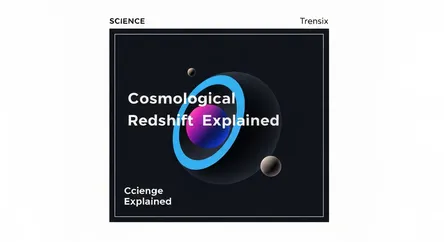Science
Cosmological Redshift Explained

Discover cosmological redshift, the key evidence for the expanding universe. Learn how light from distant galaxies stretches as space itself expands.
What is it?
Cosmological redshift is the phenomenon where light from distant celestial objects is stretched as it travels through the expanding universe. Unlike the Doppler effect, which is caused by an object's motion through space, this redshift happens because the fabric of space itself is expanding. As photons journey across billions of light-years, the expanding cosmos stretches their wavelengths, shifting them toward the redder end of the spectrum. This is a cornerstone of the Big Bang model.
Why is it trending?
The topic is constantly in the news thanks to powerful observatories like the James Webb Space Telescope (JWST). JWST is designed to see the universe's first galaxies, whose light has been extremely redshifted over cosmic time. Every time astronomers announce the discovery of a new, record-breakingly distant object, they are using redshift to calculate its immense distance and age. These findings continuously refine our understanding of cosmic evolution, keeping the concept highly relevant.
How does it affect people?
While it doesn’t impact daily life, cosmological redshift fundamentally shapes our understanding of reality. It provides the strongest evidence for an expanding universe with a beginning, answering age-old questions about our cosmic origins. This knowledge drives technological innovation in astronomy and fuels a collective human desire to explore our place in the cosmos, influencing science, philosophy, and our shared cultural perspective on existence.